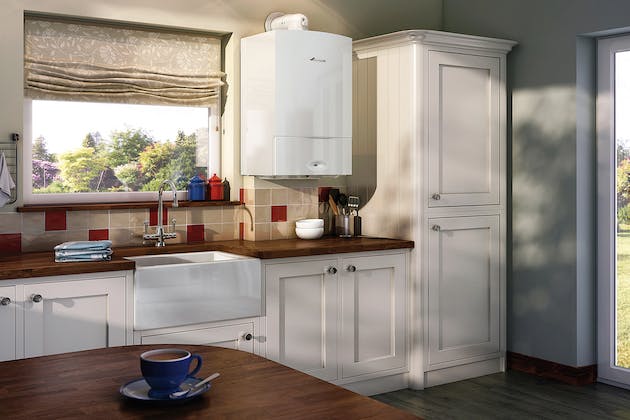Most boilers last between a decade and twelve years, so there's a good chance that your home will have changed slightly if you are considering buying a new boiler after many years of the same one. If this is the case for you, then you may want to consider where the optimum place for you to keep your new boiler is, as this may be different to where it was situated before. Read this blog post to view our advice!
Consider the total cost of any potential changes
Always keep your financial status in mind. Replacement boilers can be linked with other house upgrades like expansions or conversions. If you want to move your boiler, consider the ease of moving services and how easy the job may be. Moving a boiler may also increase boiler installation costs for the boiler installer.

Where should my new boiler be placed?
Even if you are starting from scratch, the services and choices may still be applicable. If you have access to an external wall near a drain, then this would be an ideal place to keep a new boiler. You should also consider the impact on home decor if your boiler placement is changing.
You should also think about how easily accessible your boiler will be since it will need to be serviced on a regular basis (at least once a year) by a heating professional. This means that the new place must be simple to find, and easy to access. It must also comply with building codes, which must be taken into account throughout the installation process.
What are the most typical places for a modern boiler?
The boiler in an older home may be positioned in the airing closet.
However, in many modern installations, boilers are housed in kitchen cabinets. This makes a lot of sense because services are already connected. They are frequently discovered towards the back of the home or stashed in a cupboard out of sight. This is also true for bathroom and utility room setups. Remember that your boiler will require service once a year, which will entail access for an engineer.
Boilers are now more quiet, compact, and versatile than ever. They do, however, need a consistent gas supply, a condensate drain, a filter, and limescale protection. Although the placement of the flue is not limited, there are extra elements to consider to ensure that it is in the greatest possible position to perform its purpose.

Are you changing the type or size of the boiler you own?
You might also consider upgrading your current boiler from a system boiler to a combi-boiler or changing the fuel type. When obtaining a boiler estimate, you should verify that the boiler installer chooses the right kind and size of the boiler. Many homes have the incorrect size boiler installed for their needs. All of these considerations may be necessary when installing a new boiler for your central heating system. This may also have an impact on your budget. Remember to consider in not just the cost of the boiler replacement, but also any changes to the boiler's pipes and equipment.
Take into account the placement of water, gas, and power.
If you want to replace the boiler, consider where the gas, water, and electric pipes/lines will go. If the boiler is also pre-condensing, a drain may be required. You must engage a gas safe engineer to finish the installation of a gas boiler. It is crucial that you only hire Gas Safe registered engineers like us here at Green Flame Plumbing and Heating to install a gas-powered boiler.
Restoring your external walls from ripping out your old boiler
If it is fanned flued, you may want to utilise the existing hole because making a new one may be impossible. If you need to repair an existing hole in the external wall, budget for it because it may need the appointment of additional work needed by the trade that you hire to finish the installation.
Your boiler must be located near a gas supply.
Boilers must be close to a gas supply. Obviously, the gas supply is an important factor in selecting where your boiler will go. The closer you are to the source of gas, the better. Getting that supply up into a loft or anywhere on the second story may involve a significant amount of effort and energy. As a result, it is desirable to keep it as close to the ground floor as possible.



